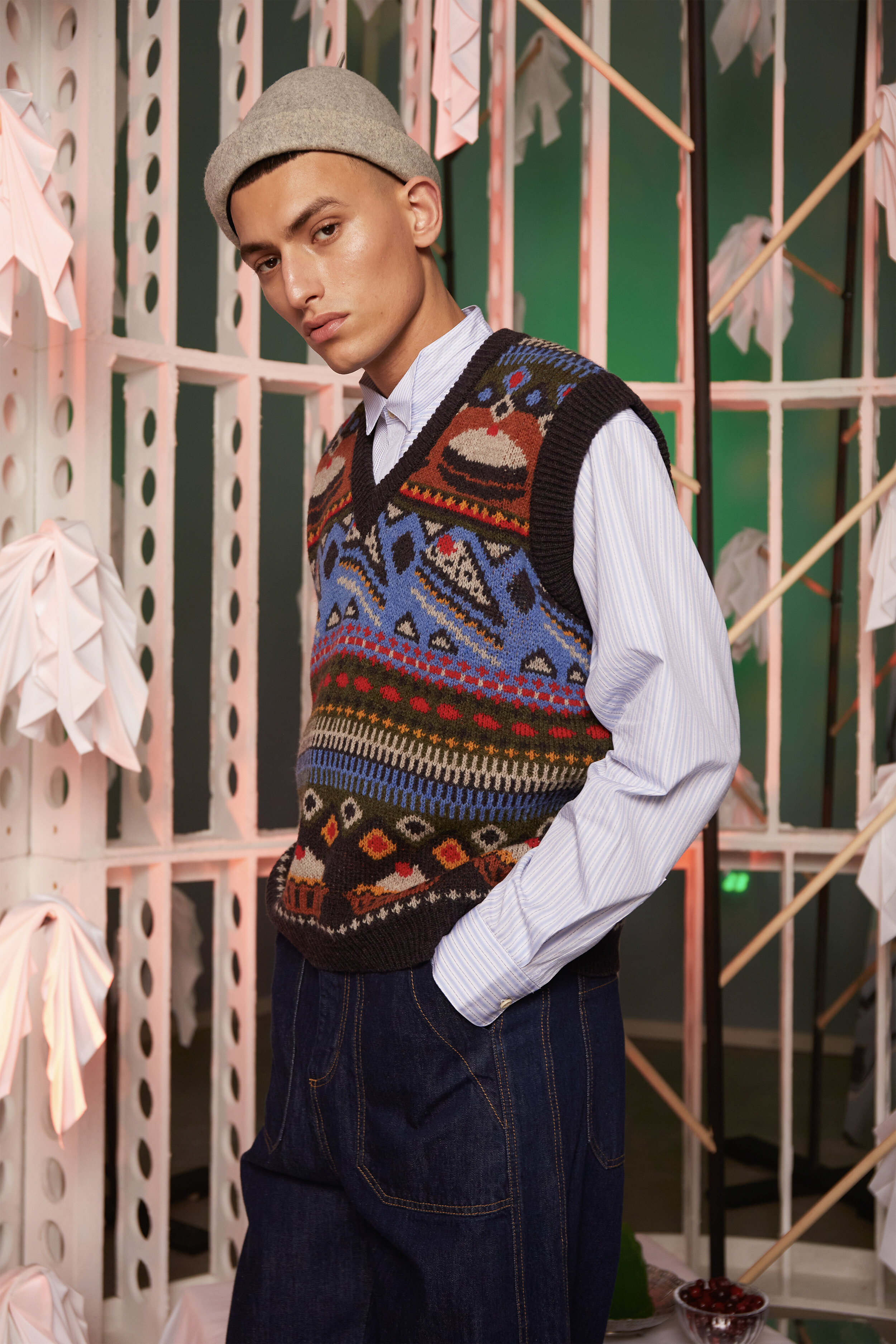The History of Cake
Henrik Vibskov AW21
To mark the 20th anniversary of Henrik Vibskov leaving Central St Martins in 2001 to start his own business, the AW21 collection is celebrating with cake. Exploring the history of cake and its many visual expressions in color and texture inspired the team for the AW21 collection. Besides being delicious, pastries has had a central role in the various celebrations of many cultures. From anniversaries to weddings and birthday parties, there is a certain ceremonial quality to sharing a piece of cake. Dissecting the process of baking from beginning to end, the team looked into cake as the coming together of different textures, colors, tools, ingredients, recipes, table settings and gatherings, drawing inspiration from the artistry of pastry chefs, grandma’s tablecloth and so much more. In the collection video this translates into a bizarre pastry factory of surrealistic green gel cakes. In a mystical universe of napkin trees and moss islands the styles are presented as the models partake in an obscure slow motion production line. The ceremony mix harvesting gel pearls in the woods with spinning the pearls into liquid in big wheels and ceremonially decorating the strange dessert, ending up at a large cake table celebrating. In the spirit of upcycling and as a tribute to the history of Vibskov’s fashion installations, the set is built up by pieces from previous scenographies reassembled in new ways. The collection reflects the theme in various ways. The color palette combines the bright green of Jello cakes with the delicate colors of macaroons and silhouettes refers to hanging tablecloths, cake shapes and Victorian gowns. Knitwear have folky patterns of different slices of cake, and custom designed jacquards are inspired by whipped cream, creamy glaze and pie crust patterns. One block print depicts a storyline of items you might have left at the cake table, and one style program carries the embroidery of one of Vibskov’s mom’s own apple pie recipes. All fabrics and trims are evaluated based on their sustainable qualities, and the choices for the collection are made thereafter. The fabrics include organic cotton, recycled polyester and recycled PET bottles for padding in outerwear, Tencel made from upcycled cotton linter and cellulose fibers, European linen and virgin wool. Certificates also include BCI (Better Cotton Initiative) and GOTS, plus Økotex for colors, dyes and prints.





















